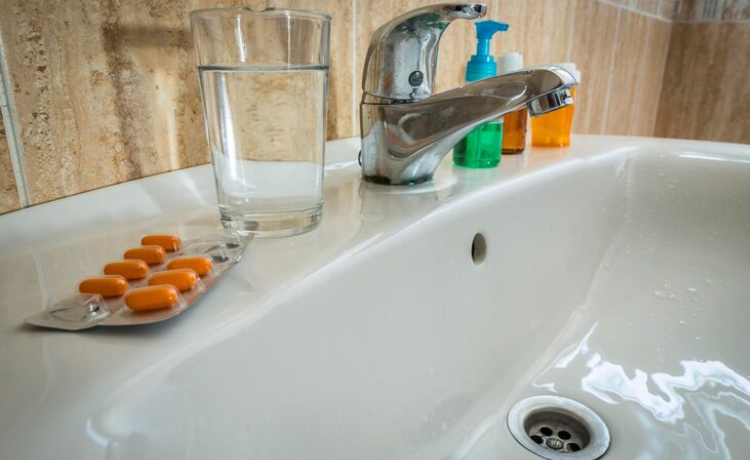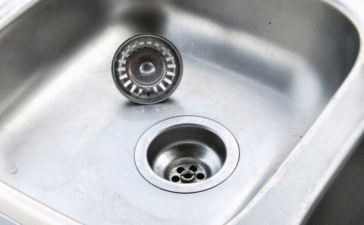Most of us don’t think twice about the water coming from our bathroom tap. We use it to brush our teeth, wash our faces, and take medication. But have you ever stopped to consider what’s actually in that water? Depending on where you live, your tap water can contain a variety of contaminants, from chlorine and heavy metals to pesticides and pharmaceuticals. This growing awareness around water quality has led many to seek solutions for cleaner, safer water right at the source. This guide will walk you through everything you need to know about bathroom sink water filters. We will explore the different types available, the benefits they offer, and how to choose, install, and maintain the right one for your home. By understanding the role these filters play, you can make an informed decision to protect your family’s health, improve your daily routines, and reduce your environmental footprint. Investing in a bathroom sink water filter is a direct step toward ensuring the water you use every day is as pure as possible.
What Is a Bathroom Sink Water Filter?
A bathroom sink water filter is a device designed to remove impurities from the water that flows through your bathroom faucet. These are typically “point-of-use” systems, meaning they treat water at a single fixture, as opposed to “whole-house” systems that filter all water entering your home.
These filters work through various processes to purify water. The most common methods are adsorption, where contaminants stick to the surface of the filter media (like activated carbon), and physical filtration, which uses a barrier to block particles. More advanced systems use reverse osmosis, a process that forces water through a semipermeable membrane to remove even the smallest dissolved solids. Each technology targets different types of impurities, making some filters better suited for specific water quality issues than others.
Benefits of a Bathroom Sink Water Filter
Installing a water filter in your bathroom can bring immediate and noticeable improvements. One of the first things people notice is the enhanced taste and smell of their water. Many municipal water systems use chlorine to disinfect the water supply, which can leave an unpleasant chemical taste and odor. Activated carbon filters are particularly effective at removing chlorine, resulting in water that is much more pleasant to drink and use.
The primary benefit, however, is the removal of harmful contaminants. According to the Environmental Protection Agency (EPA), drinking water can contain a range of pollutants, including lead, mercury, volatile organic compounds (VOCs), and pesticides. A 2021 study published in the journal Water Research found that point-of-use filters significantly reduce exposure to many of these substances. This is especially important for vulnerable individuals such as children, the elderly, and pregnant women, for whom even low levels of exposure can pose health risks. Filtering your water can reduce the risk of gastrointestinal issues and long-term problems associated with heavy metal exposure.
Types of Bathroom Sink Water Filters
When choosing a filter, you’ll encounter a few main types, each with its own strengths.
Activated Carbon Filters
Activated carbon filters are the most common and affordable option. They use a porous form of carbon to adsorb contaminants like chlorine, VOCs, and pesticides. This process improves the taste and odor of water, making them an excellent choice for those with treated municipal water.
Reverse Osmosis (RO) Filters
Reverse osmosis filters offer a more advanced level of filtration. They use high pressure to push water through a membrane with microscopic pores, removing a wide array of contaminants, including heavy metals like lead and arsenic, fluoride, and total dissolved solids (TDS). The Journal of Water and Health has consistently shown RO systems to be highly effective at producing purified water. These systems are ideal for households with specific concerns about hard-to-remove pollutants.
Multi-Stage Filters
Multi-stage filters combine several filtration methods into one system to provide comprehensive water treatment. For example, a system might include a sediment pre-filter to remove dirt and rust, an activated carbon filter for chlorine and VOCs, and a final stage for targeting specific contaminants. This layered approach ensures a broader spectrum of impurities is removed.
You will also need to decide between an under-sink or a faucet-mounted filter. Faucet-mounted filters attach directly to your existing faucet and are easy to install, while under-sink filters are installed beneath the sink and connect directly to the water line, often providing a higher flow rate and longer filter life.
How to Choose the Right Bathroom Sink Water Filter
Selecting the right filter depends on several key factors. First, understand your water quality. You can obtain a water quality report from your local utility provider or have your water tested by a certified lab, which is especially important if you use well water. This will tell you which specific contaminants are present.
Next, consider the filter’s flow rate, which determines how quickly filtered water comes out of the tap. A low flow rate can be frustrating for daily use. Also, look for certifications from organizations like NSF International (formerly the National Sanitation Foundation). An NSF/ANSI certification ensures the filter has been independently tested and proven to remove the contaminants it claims to. For example, NSF/ANSI 42 certifies for aesthetic effects like chlorine taste, while NSF/ANSI 53 certifies for health effects like lead removal.
Finally, think about your budget and maintenance requirements. Consider both the upfront cost of the system and the ongoing expense of replacement filters. A system with a longer filter lifespan may have a higher initial cost but could be more economical over time.
Installation and Maintenance
Many bathroom sink water filters are designed for easy DIY installation. Faucet-mounted units can often be installed in minutes without any tools. Under-sink systems are more involved but typically come with detailed instructions. Common installation issues include leaks from improper connections, so be sure to follow the manufacturer’s guide carefully.
Proper maintenance is crucial for your filter to perform effectively. The main task is replacing the filter cartridge according to the manufacturer’s schedule. A clogged filter can not only stop working but also harbor bacteria. Set a reminder or choose a filter with an indicator light that signals when a replacement is needed. If you notice a sudden drop in water pressure or leaks, it could be a sign that the filter is clogged or needs to be reseated.
Cost-Effectiveness of Bathroom Sink Water Filters
While there is an initial investment, a bathroom sink water filter can be a highly cost-effective solution. The upfront cost can range from around $30 for a simple faucet-mounted filter to several hundred dollars for an advanced under-sink RO system. Replacement filters are an ongoing expense, but when compared to the cost of bottled water, the savings are significant.
Beyond the financial savings, the environmental benefits are substantial. Using a water filter drastically reduces plastic waste from single-use water bottles. According to EarthDay.org, Americans purchase about 50 billion water bottles per year, and a large percentage of these end up in landfills and oceans. By filtering your own water, you contribute to a healthier planet.
You should also read: “drop in bathroom sinks“
Expert Insights on Water Filtration
Health and plumbing experts overwhelmingly support the use of point-of-use water filters. Dr. Jane Hightower, an internal medicine specialist and author, emphasizes the importance of reducing exposure to heavy metals like mercury, which can be present in tap water. Plumbing professionals often recommend certified under-sink systems for their reliability and effectiveness. Research continues to reinforce that taking control of your water quality at home is a proactive and powerful step toward better health.
Invest in Your Health and Well-being
A bathroom sink water filter is more than just a convenience; it’s an investment in your health, your peace of mind, and the environment. By removing harmful contaminants and improving the taste of your water, these simple devices can have a profound impact on your daily life. Take the time to assess your water quality, research your options, and choose a filter that meets your needs. It’s a small change that delivers significant returns for you and your family.
Frequently Asked Questions
Do bathroom sink water filters really improve water taste and odor?
Yes, they do. Filters equipped with activated carbon are particularly effective at removing chlorine and other chemicals that cause unpleasant tastes and smells in municipal tap water. Most users notice a significant improvement almost immediately.
How often should I replace the filter in my bathroom sink filter?
The replacement frequency depends on the filter type and your water usage. Faucet-mounted filters typically need to be replaced every 2-3 months, while under-sink cartridges can last from 6 months to a year. Always follow the manufacturer’s recommendations for optimal performance and safety.
Can I use a bathroom sink filter for well water?
Yes, but it’s crucial to test your well water first to identify the specific contaminants present. Well water can contain bacteria, nitrates, and high levels of minerals that may require a more specialized filtration system, such as a multi-stage or reverse osmosis unit.
What contaminants can a bathroom sink water filter remove?
This varies by filter type. Activated carbon filters are great for chlorine, pesticides, and VOCs. Reverse osmosis systems can remove a broader range, including heavy metals (lead, arsenic), fluoride, and total dissolved solids. Always check the product’s NSF certification to see what it is certified to remove.
Do I need a plumber to install a bathroom sink filter?
Not usually. Most faucet-mounted and under-sink water filters are designed for DIY installation and come with clear instructions. However, if you are not comfortable working with your plumbing, hiring a plumber is always a safe option to ensure a correct and leak-free installation.
Are under-sink filters better than faucet-mounted ones?
“Better” depends on your needs. Under-sink filters are generally more robust, have longer-lasting filters, and don’t clutter your faucet. Faucet-mounted filters are more affordable, easier to install, and are a great entry-level option.
Will a water filter reduce my water pressure?
Some reduction in flow rate is normal, as the water needs to pass through the filter media. However, a significant drop in pressure might indicate a clogged filter that needs replacement. High-quality systems are designed to minimize the impact on water pressure.












